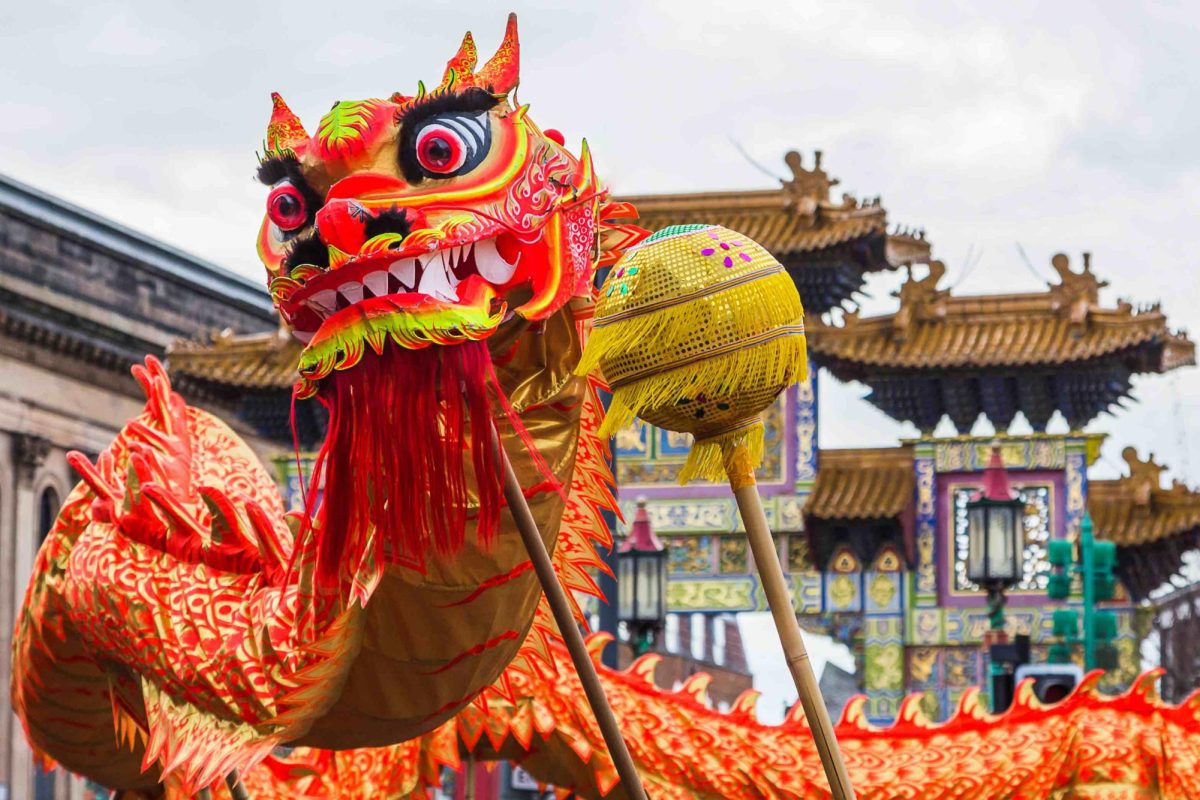Lunar New Year, sometimes called Chinese New Year, is the beginning of a new year based on the lunar calendar and a celebration of spring beginning. It’s typically celebrated in China and other Asian countries like Vietnam and South Korea. This lunisolar celebration, occurring on February 10th this year, is when people typically wish for luck, fortune, and prosperity. To many, this is the most important holiday of the year, a time for clearing out the old and bad while welcoming in the good. 2023 was the year of the water rabbit, symbolizing hope and peace, and 2024 is the year of the wood dragon, an indicator of power and prosperity.
Many believe that the Lunar New Year originated during the Shang Dynasty when sacrifices were offered to gods to bless the harvest. In one legend, a mythical monster named Nian (meaning year) attacked villagers and destroyed crops near the new year. One man realized that Nian feared loud noises, bright lights, and the color red, so people hung red lanterns and lit firecrackers and bamboo, which evolved into the traditional customs of the Lunar New Year seen present-day. The official date of the Chinese New Year festival was set in stone during the Han Dynasty, the first day of the first month in the lunar calendar. Other traditions developed later, including cleaning the house and sharing dinner with family members. Superstitions also developed with the holiday, such as not saying words like death to keep out negative energy, not washing your hair so as not to wash away luck, and not sweeping the floor to ensure not good fortune is swept out.
Lunar New Year traditions vary greatly from country to country, from the kumquat trees of Vietnam to the dragon dances of Indonesia. For example, in China, people typically enjoy dinner with their family, eating dumplings for wealth and tangyuan for familial unity. Elders give out hongbao or lai see– bright red envelopes containing money– to the young and unmarried. It’s also traditional to clean one’s house, to get rid of any lingering bad luck for the new year. Red lanterns are hung, lion dances are performed, and mahjong is played over a plate of Nian Gao (New Year’s cake). Many also pray to their ancestors and offer sacrifices of food as a show of respect. Wilcox sophomore, JieAn Liao, shared how her family has celebrated since moving from Taiwan to the US: “Usually my family celebrates Lunar New Year’s Eve with family friends and we eat traditional new year dishes. Usually, there’s fish, hot pot, dumplings, rice, multiple veggie dishes, a lot of fruit, and nian gao. Then the kids receive red envelopes.” JieAn’s parents grew up in Taiwan, so their more recent new years have been significantly mellower than the loud celebrations in the streets of Kaohsiung.
The Vietnamese New Year is called Tết Nguyên Đán or Tết for short, is arguably the most important festival in Vietnam, with celebrations and traditions lasting for days. On Tết, family members gather from all over to decorate houses and spend time together as many return to their hometowns. Food is prepared to bring to the ancestor’s altar and graves are visited to show remembrance and thanks to those who came before them. Cakes made from mung beans, pork, and glutinous rice wrapped in banana leaves are wrapped, called bánh tét in the south and bánh chưng in the north. Many decorate their homes with kumquat trees, a symbol of prosperity and life.
In South Korea, the new year is called Seollal, and one of the main focuses is ancestor worship. Food is prepared and served for ancestors in a ritual called charye. Later, family members then participate in a part of the ceremony called eumbok, in which the food is eaten to gain the ancestors’ blessing for the new year. One of the most popular dishes eaten at Seollal is tteokguk, a soup made of sliced rice cakes. The coin-shaped rice cakes symbolize wealth, while the white color of the soup symbolizes purity and rebirth. Most wear the hanbok, a traditional Korean dress, and younger ones bow to their older family members in a show of respect called sebae.
It is predicted that in 2024, those born in the Years of the Pig, Monkey, and Rooster will have a prosperous and lucky year. One’s zodiac animal fortune depends on the positions of the Tai Shui, stellar deities whose orbits rotate in opposition to Jupiter. For example, the star Yi Ma Xing, the star of movement, will shed light on people born in the Year of the Horse, leading to various travel opportunities. To find more specific predictions for an individual, a consultant can look at a person’s birth chart of different star positions at different times during their day of birth and see how those positions correlate with the new year.
Lunar New Year is a widely celebrated holiday across the world that has been celebrated for thousands of years. The celebration is generally celebrated by removing old and bad energy and welcoming in the new before the new year. Celebrations full of food, dances, games, and light often last for weeks as people attempt to find prosperity and luck before the new year.







